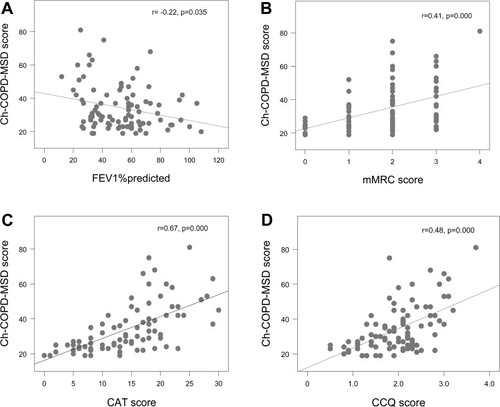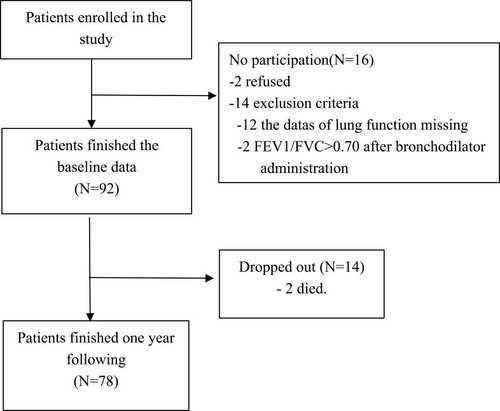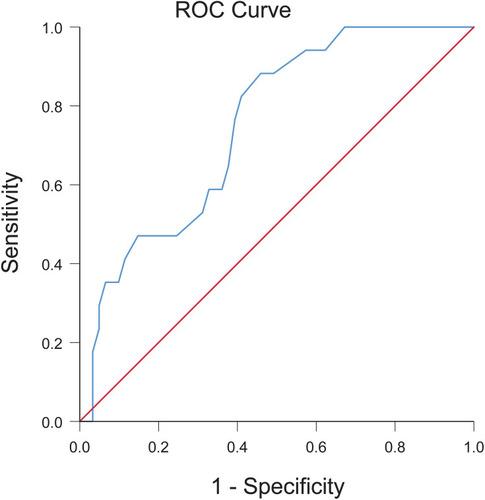Figures & data
Table 1 Baseline Characteristics
Figure 2 Morning symptom score in COPD GOLD A, B, C and D groups. COPD GOLD A (n=12), B (n=35), C (n=4) and D (n=41). Data were compared between groups using the Kruskal–Wallis H-test.

Figure 3 Association of morning symptom and clinical characteristics in COPD patients. (A) Comparison of baseline mMRC score between the two groups. (B) Comparison of baseline CAT score between the two groups. (C) Comparison of baseline CCQ score between the two groups. Data were compared between groups using the Mann–Whitney U-test and t-test.

Table 2 Associations Between Clinical Characteristics and Morning Symptoms Severity According to Multiple Linear Regression Analysis
Figure 4 Correlation between morning symptom and clinical characteristics. (A) Correlation between Ch-COPD-MSD score and FEV1% predicted in COPD patients. (B) Correlation between Ch-COPD-MSD score and mMRC score in COPD patients. (C) Correlation between Ch-COPD-MSD score and CAT score in COPD patients. (D) Correlation between Ch-COPD-MSD score and CCQ score in COPD patients. Correlations between continuous variables were evaluated using Spearman’s rank correlation coefficient.

Table 3 The Relationship Between Morning Symptoms and the Exacerbations of the One-Year Follow-Up Period


